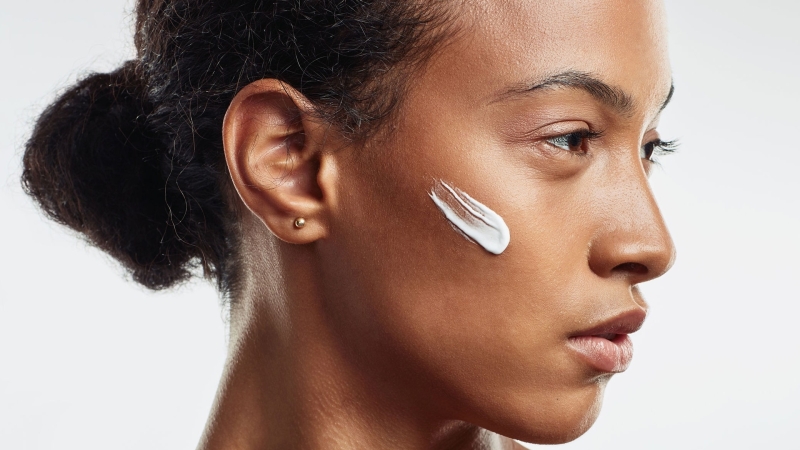
Getty Images
All products are independently selected by our editors. If you buy something, we may earn an affiliate commission.
Ready to feel more confident when reading your beauty products' ingredient labels? Enter, the Allure Ingredient Index. In this comprehensive guide, you'll find everything you need to know about the most in-demand (and under-the-radar) ingredients in your favorite skin-care products.
Think back to your first-ever breakout — most likely circa age 12 or 13, and probably very stressful. When you noticed preteen acne forming on your skin, what did you reach for? Whether you took to the drugstore aisles yourself or relied on whatever your older sibling had lying around, chances are, you used something — a cleanser, scrub, spot treatment, or cream — that contained benzoyl peroxide.
This skin-care ingredient isn't new or trendy, but that’s part of what makes benzoyl peroxide so powerful: It's reliable. As New York City-based board-certified dermatologist Marisa Garshick, M.D., puts it, benzoyl peroxide is "an oldie but goodie, in that it is an effective way to treat acne."
But how, exactly, does benzoyl peroxide work when it applied to the skin? And what types of acne does it work best at treating? For a full rundown of the ingredient, we consulted the experts to help break down everything about benzoyl peroxide.
What is benzoyl peroxide and how does it work on skin?
Technically speaking, benzoyl peroxide is "an organic peroxide that acts as a nonspecific oxidizing agent," explains Kimberly Jerdan, M.D., a board-certified dermatologist in California. In other words, it's a chemical compound that, through oxidizing activity on the skin, can help treat acne.
What does oxidizing activity mean, exactly? Benzoyl peroxide is actually similar in structure to hydrogen peroxide "in that it is a peroxide type of medication that releases oxygen on the skin to destroy bacteria," explains Florida-based board-certified dermatologist Matthew Elias, M.D. However, the ingredient works slightly differently from hydrogen peroxide (which is that clear liquid in everyone's medicine cabinet that your parents likely applied onto cuts and scrapes when you were younger).
In addition to its ability to destroy bacteria, benzoyl peroxide is also an anti-inflammatory and comedolytic, meaning that it simultaneously works to open up pores and decrease inflammation on the skin. Pretty neat, right?
New York City board-certified dermatologist Jessica Krant, M.D., sums it up best: "Benzoyl peroxide is so effective and reliable for acne because it works via several different mechanisms at once," she tells Allure. "It is both antimicrobial, killing bacteria and other organisms, and an exfoliant, helping to unclog pores and gently debride the surface layer of skin." So, there you have it: antimicrobial, plus anti-inflammatory, plus exfoliant, equals a powerful acne-fighting ingredient.
The ingredient's ability to squash acne-causing bacteria in its tracks is especially important because it means that, in some cases, it can be used to tame acne in place of antibiotics. And we all know what happens when antibiotics are used for too long: resistance. Using benzoyl peroxide, either in place of or in combination with antibiotics, helps to mitigate the issue.
"The benefit of using [benzoyl peroxide] is that you don't have to rely on an antibiotic to keep the bacteria load on the face down, and this helps reduce the risk of antibiotic resistance," Dr. Jerdan explains.
What types of acne does benzoyl peroxide treat?
"Although it can work for all types of acne, it can be especially helpful for the red, inflamed bumps," Dr. Garshick explains. Dr. Krant concurs, saying that while it can help with acne in all of its many forms, benzoyl peroxide is "more obviously effective with comedonal (black and whiteheads) and pustular (small red bumps with white tips) [acne]."
In some cases, however, benzoyl peroxide can also help with cystic acne, which is the deepest, and most painful, type.
What is the best way to use benzoyl peroxide to treat acne?
You don't need a prescription for benzoyl peroxide. Like we said, take a stroll down the drugstore skin-care aisle and you'll spot it everywhere. The percentage of the ingredient in over-the-counter products ranges from 2.5 to 10 percent, however, it's not necessarily the percentage you should be focused on.
Interestingly, both Dr. Krant and Dr. Garshick maintain that benzoyl peroxide is just as effective in treating acne at 2.5 percent and 5 percent as it is at 10 percent. The difference, both dermatologists say, is that the higher percentages run the risk of irritating or drying out the skin too much. While everyone's acne is different, in general, Dr. Jerdan advises patients to stick within the 3 to 5 percent range.
In addition to this wide range of active-ingredient percentages, benzoyl peroxide also comes in a wide range of different product types. You'll find it in facial cleansers, scrubs, masks, spot treatments, and other types of leave-on creams. With so many options, how are you supposed to choose the right formulation and product type?
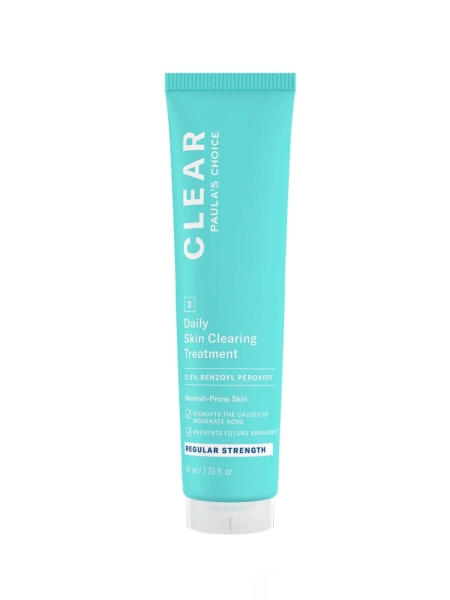
Paula’s Choice
Paula's Choice Clear Daily Skin Clearing Treatment
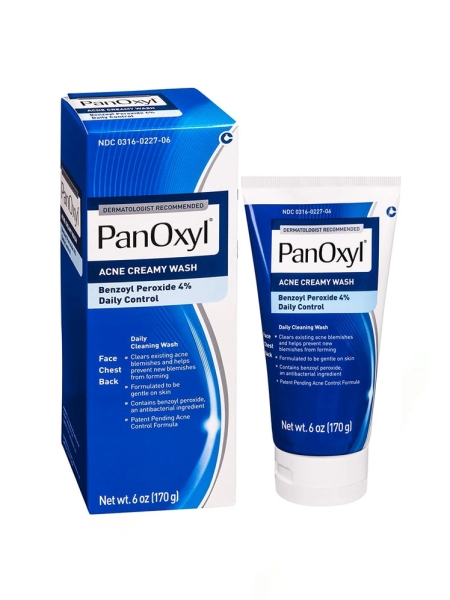
Panoxyl
Panoxyl Acne Creamy Wash
Kathryn Dempsey, M.D., a board-certified dermatologist in Alabama, suggests the following guidelines. For rinse-off products, such as a cleanser or scrub, start with 4 percent and increase, as tolerated, up to 10 percent. On the lower end of the spectrum, we love PanOxyl Acne Creamy Wash and Paula's Choice Daily Skin Clearing Treatment.
For spot treatments, leave-on creams, and face masks, Dr. Dempsey suggests starting with 2.5 percent and working your way up to 5 percent. Try Neutrogena's On-the-Spot Acne Treatment or Rapid Clear Stubborn Acne Daily Leave-On Mask, both at 2.5 percent, or Glossier’s Zit Stick, which is formulated with 5 percent.
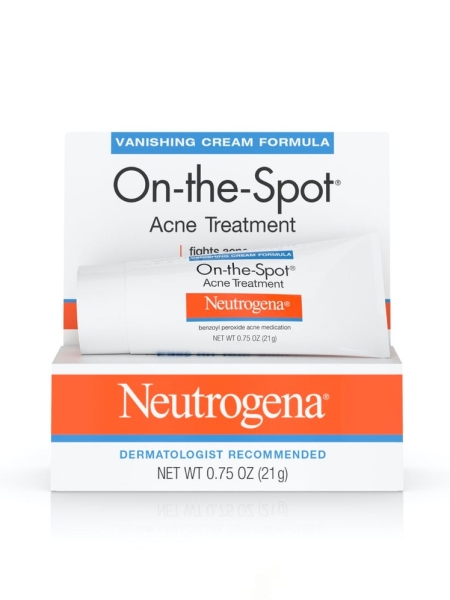
Neutrogena
Neutrogena On-the-Spot Acne Treatment
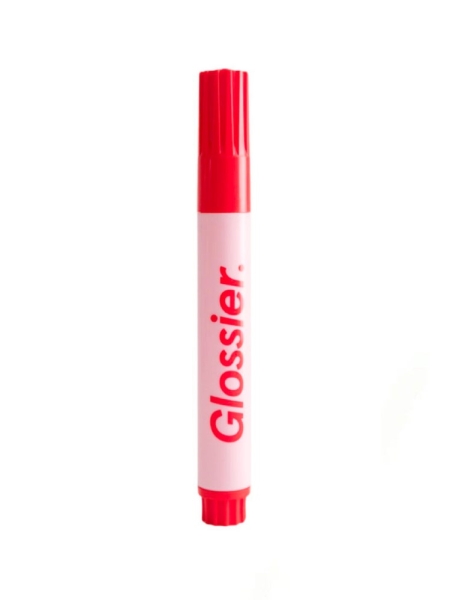
Glossier
Glossier Zit Stick
Again, though, everyone's skin is different, and if you are experiencing painful, stubborn acne, it's always wise to consult a board-certified dermatologist who can help you put together a tailored regimen.
One last thing, and perhaps the biggest complaint about benzoyl peroxide, is that it can bleach things like dark towels, sheets, and clothing. But there's a simple fix — you'll want to "be mindful of rinsing it off completely when using a cleanser or letting the leave-on product dry completely prior to getting dressed," in order to avoid an unsightly stain, Dr. Garshick suggests.
Is there anyone who should avoid using benzoyl peroxide?
Since benzoyl peroxide can cause irritation in the form of redness and extra-dry skin, those with sensitive skin are advised to use BPO-containing products with the lowest concentrations, if not avoid them altogether.
Also, and this is important, if you're pregnant or planning to get pregnant, you'll also want to avoid this ingredient altogether. Benzoyl peroxide has a pregnancy category C safety labeling, which means that "there have been risks when tested on animals, but no studies have been done on humans or pregnant women," Dr. Jerdan explains. In general, the consensus among most doctors is that benzoyl peroxide should be avoided entirely during pregnancy.
It is also possible to have a true benzoyl peroxide allergy, Dr. Krant explains, and about 1 percent of the population does. So, if you develop a rash while using the ingredient, stop the product and discuss with your board-certified dermatologist.
All products featured on Allure are independently selected by our editors. However, when you buy something through our retail links, we may earn an affiliate commission.
You can follow Allure on Instagram and Twitter, or subscribe to our newsletter to stay up to date on all things beauty.